Medical imaging is a big part of modern medicine because it helps doctors figure out what’s wrong with patients and give them the right care. Billing for medical imaging can be difficult and time-consuming for healthcare providers, which negatively impacts their finances. When you do imaging billing right, you pay medical imaging providers quickly and correctly. This is crucial for any medical office to run smoothly.
This article will talk about the best ways to speed up, simplify, and reduce the chances of mistakes in your medical Imaging billing process. Your clinic can avoid common billing mistakes and make more money by learning how CPT codes for imaging, processing imaging claims, and proper billing practices all affect reimbursement.
What is the price of medical imaging billing?
When you send claims to insurance companies for medical imaging, you are asking them to pay for the services that X-rays, CT scans, MRIs, and ultrasounds provide. Billing has the following steps:
- Correct Coding: Using the right CPT codes for imaging.
- Claim Submission: Sending claims to insurance companies so they can pay them.
- Reimbursement: Making sure that patients or insurance companies pay on time.
To make sure that healthcare providers get all the money they are owed for their work, it is important to process imaging claims correctly. It also has a direct effect on the practice’s overall financial health.
Why Should You Make It Easier for People to Pay for Imaging?
A simpler billing process for medical imaging makes things easier for the office staff and helps healthcare providers get paid more quickly. This is why it’s important:
1. Maximize Payment
A smooth billing process makes sure that the right CPT codes are used for imaging procedures, which means that the services are charged correctly. If you don’t fill out the right forms or code things correctly, you might not receive payment at all, the process might take longer than it should, or you might receive less money than you should. All of these things can slow down your revenue cycle.
2. Reduce Mistakes
When employees don’t talk to each other or type in information by hand, imaging billing can go wrong. Using specialized imaging billing software and automating the process lowers the risk of mistakes and makes sure that everything is correct and meets the needs of the payer.
3. Improve Cash Flow
You might get paid a lot faster if you process imaging claims quickly. Your practice’s cash flow will improve if you quickly handle and pay claims.
The Best Way to Make Your Medical Imaging Billing Go Faster
Here are some things you can do to make it easier for your medical imaging billing to go through and get paid more quickly:
1. Keep Up with the Newest Imaging CPT Codes
Use the right CPT codes to charge for medical imaging services. Insurance companies can use these codes to find the right procedure and pay for it. The AMA changes CPT codes all the time to keep up with new technologies and methods. Healthcare providers should always know the most recent CPT codes for imaging so they don’t mess up bills.
For example:
- It’s important to use the right CPT codes for CT and MRI scans.
- You should also use some codes for X-ray procedures to ensure the bills are correct.
Regularly checking and updating the CPT codes used for billing will help make sure that claims are handled correctly and are less likely to be turned down.
2. Use Software to Send Bills for Imaging
One of the best ways to speed up the billing process for medical imaging is to use automated imaging billing software. These software programs can help you with:
- Change descriptions of procedures into CPT codes on their own.
- Before you send in your claim, check to see that it has everything it needs.
- Keep track of claims so that follow-ups happen on time and refunds happen more quickly.
These tools also help people follow the rules set by the payer and make fewer mistakes. This makes the claims process go faster and more accurately.
3. Learn What Your Insurance Covers Before You Need It
It’s important to know what kind of insurance the patient has before doing imaging tests. This makes sure that you get claims on time. Before you get imaging services, it’s a good idea to call your insurance company to make sure they cover them. This can help you avoid making mistakes that could lead to your claims being denied.
You can be sure that the claim will go through without any problems if you double-check the patient’s insurance information, such as their network status, co-pays, and deductible amounts.
4. File Claims Online
Online Claims submission is the best and fastest way to do it. When you submit things electronically, you don’t have to fill out as much paperwork, the process goes faster, and people are less likely to make mistakes when they type in information by hand. This way, your practice can also see how claims are doing.
Most insurance companies will accept claims that healthcare providers send by email. Healthcare providers should use this option to speed up their payments.
5. Keep an Eye on Claims and Check on Them Again
In the imaging billing process, follow-up is very important. You should check the status of your claim after you send it in to ensure you receive payment on time. If your claim is denied or takes too long, you need to fix the problem right away, clear up any confusion, and send it in again. A claims management system that is well-organized makes sure that all claims are kept track of.
Imaging Claims Processing: A Critical Component of Medical Imaging Billing
Imaging claims processing refers to the steps involved in submitting a claim, tracking its status, and ensuring that it gets paid in a timely manner. It’s essential to have a streamlined process for claims processing to reduce the time it takes to receive payments.
1. First Submission
After checking the CPT codes and the patient’s insurance information, the payer gets the claim. You can send this by email or regular mail.
2. Send It Back and Check In Again
You should find out why your claim was denied and fix it as soon as you can. Then, once you resolve the issue, send it back. You should check on imaging claims processing right away to make sure you get your money fast.
3. Paying
After the insurance company has looked over the claim, the payment should show up in your practice’s system. You should check into it and fix it right away if the bill and the payment don’t match.
FAQs About Medical Imaging Billing
1. What are the CPT codes for imaging?
CPT codes are unique codes that are used to identify and bill for medical imaging tests like X-rays, MRIs, and CT scans. These codes are very important to ensure correct payment for the work.
2. Why do they keep saying no when I ask for imaging?
The imaging claim can be denied if the CPT codes are wrong, the information is missing, or the patient’s information is wrong. To make sure your claim doesn’t get denied, you should check that all the information is correct and complete.
3. How can I speed up the process of paying for imaging services?
Using imaging billing software to keep track of CPT codes for imaging, check insurance information, and send claims electronically can all help you get paid back faster.
4. What can I do to make it less likely that there will be problems with billing for medical imaging?
To avoid mistakes in medical imaging billing, use automated billing systems, keep up with CPT codes, double-check insurance information before sending in claims, and make sure that each imaging procedure is well-documented.
Conclusion
Healthcare providers need to get paid on time and keep their revenue cycle healthy, so medical imaging billing has to be done right. Following best practices like keeping up with CPT codes, using imaging billing software, checking insurance information, and keeping an eye on claims can help you get your imaging claims processed and paid faster.
These steps will not only speed up and improve your medical billing process, but they will also help your practice do well in today’s complicated healthcare system.
These tips can help healthcare professionals bill for imaging services in a better way. This will help them do their jobs better, make fewer mistakes, and make more money.


